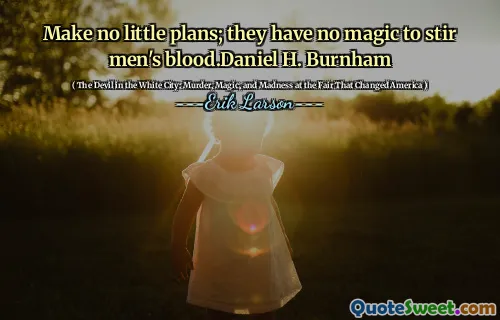She lapsed into "melancholia," a sweet name for depression.
In Erik Larson's book, "The Devil in the White City," the narrative delves into the complexities of human emotions, exemplified by the character's experience of "melancholia." This term is portrayed as a gentler label for the profound state of depression, suggesting a romanticized view of suffering. The use of such language highlights society's tendency to soften the often harsh reality of mental health struggles.
The story unfolds during the Chicago World's Fair, juxtaposing the excitement of innovation and architecture with the darker aspects of human nature. Through this contrast, Larson explores themes of obsession, madness, and the impact of personal despair amid monumental events, revealing how individuals grapple with their inner demons even as they navigate the challenges of the external world.






